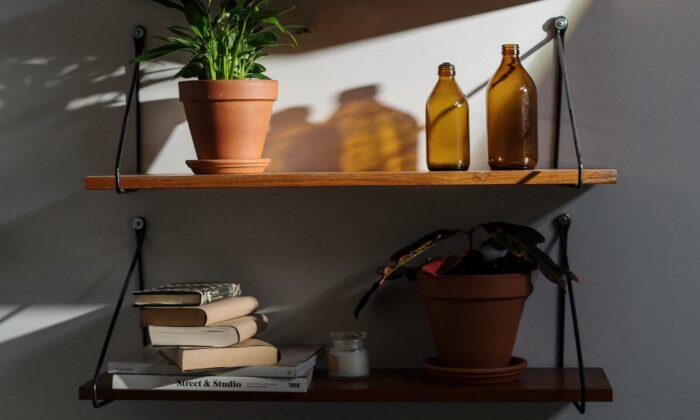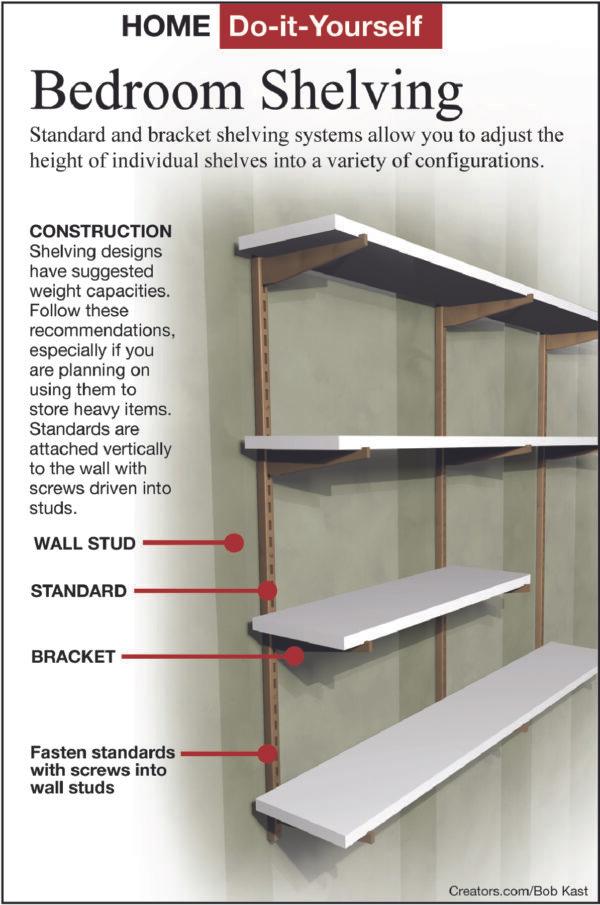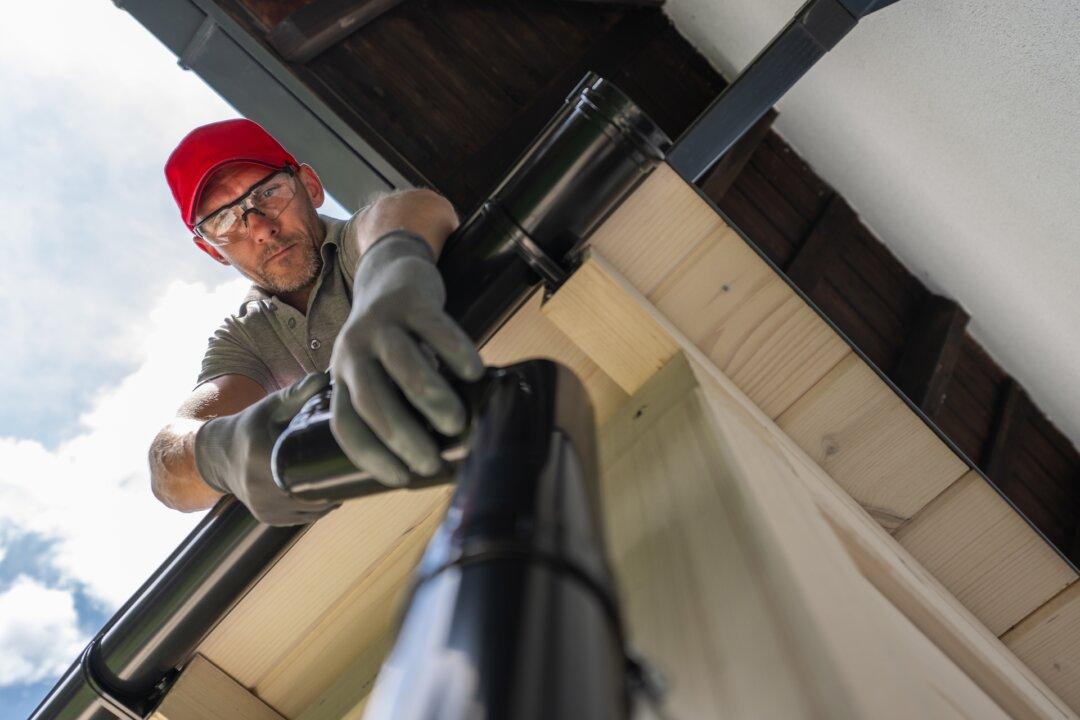Once you know the sizes of the largest items you want to store on the shelves, visit the shelving aisle at your home center store. You'll see many bracket and shelving options. Knowing the size you need, check the specification on the products to determine which are strong enough to hold your items.
If you’re not an experienced do-it-yourselfer, you'll find standard-and-bracket shelving simple to install and reasonably attractive. This type of shelving consists of brackets that lock into slotted metal strips called standards. In order to get the sides even, some standards have numbered slots so that you know where to slip in each bracket.
The shelving can be made from wood you cut to length or pre-cut shelving boards. You'll have to spend more for the pre-cut shelves, but unless you have a good miter or cutoff saw for square ends, the pre-cut shelves will look better. Since the shelves will be in a bedroom and there may be leaky bottles of different types on them, shelving with a laminated top might be a good idea.
Your next step is to select the brackets and standards for the shelves. There are many options, such as finish and style, and the widths range from a few inches to about two feet. Buy enough of each so they can be attached to the underlying wall studs. Don’t just try to screw them into the drywall and assume they will support much weight.
There are a number of methods to find the wall studs. An electronic stud finder is the easiest method. Just move it across the wall and lights will indicate the location of the studs. Most electrical outlet conduit boxes are attached to a wall stud, so use those as a reference point. Tap on the wall and you can generally hear the difference when you’re over a stud.
It’s important to get the shelving perfectly level. There are many vibrations in a house that you may not even feel. However, these vibrations can be strong enough over time to cause items on a slightly uneven shelf to fall off the edge.
First attach one standard to the wall to provide the shelf height you desire. Place a bubble level or a laser level on the top edge of the attached standard and mark its location on each of the wall stud locations.
Carefully line up the tops of all the other standards with this and screw them into the studs.
With the standards all screwed in place, hook the brackets into the appropriate slots. Use a plastic or rubber mallet to tap them down until they seat in the slots. Place the pre-cut shelves into the brackets and they should line up well for even support.






